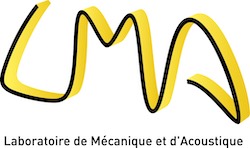- Advisors : Frédéric Lebon (AMU, LMA, France) and Giuseppe Vairo (DICII, Universitá di Roma “Tor Vergata”)
- Funding: Universitá di Roma “Tor Vergata” (2011-2014)
Jury
- Elio Sacco, Professore Università di Cassino e del Lazio Meridionale, Supervisor
- Eric Jacquelin, Professeur Université Lyon 1 Claude Bernard, Supervisor
- Frédéric Lebon, Professeur Université Aix-Marseille, Thesis Advisor
- Djimédo Kondo, Professeur Université Paris 6 Pierre et Marie Curie, Examiner
- Giuseppe Vairo, Professore associato Università di Roma “Tor Vergata”, Supervisor
- Raffaella Rizzoni, Ricercatrice Università di Ferrara, Examiner
- Serge Dumont, Professeur Université de Nimes, Invited Examiner
- Hélène Welemane, MCF (Maître de conférences) Ecole Nationale d’Ingénieurs de Tarbes, Invited Examiner
Abstract
The crucial role of solid interfaces in structural problems in several engineering fields (e.g., Civil Engineering, Mechanical Engineering, Biomechanics, etc.) is well-established and they represent certainly a scientific topic of great interest. Nowadays, analytical and numerical modeling of structural interfaces are challenging tasks, due to the complex physical phenomena to take into account (such as adhesion, non-conforming contact, microcracking, friction, unilateral contact), as well as to the need of numerical methods suitable for treating small thickness of the interface zones and jumps in the physically relevant fields.
Present PhD thesis aims to develop a consistent and general analytical tool able to overcome some modeling shortcomings of available modeling strategies accounting for soft and hard interfaces, and characterized by evolving microcracking. A novel approach, referred to as Imperfect Interface Approach (IIA), is proposed. It consistently couples asymptotic arguments and homogenization techniques for microcracked media in the framework of the Non-Interacting Approximation (NIA). In detail, the micromechanical homogenization is exploited to find the effective elastic properties of a microcracked interphase between deformable adherents. Additionally, by employing a matched asymptotic expansion method, the interface laws are deduced, in the limit of a vanishing interphase thickness. In the context of linear elasticity, the IIA is successfully employed to derive a set of imperfect interface, addressing both the case of an initially-isotropic three-dimensional interphase and of initially-orthotropic two-dimensional interphase. In particular, in two-dimensional case, stress/strain-based soft and hard interface laws are properly recovered as depending on the adopted homogenization approach. By generalizing the matched asymptotic expansion method to finite strains, a nonlinear soft interface model has been derived. As a new general application, the IIA is applied to formulate a spring-type model for non-conforming contact, which is successfully compared with theoretical predictions and available experimental data. Finally, numerical simulations applying the soft interface models obtained in both linear and nonlinear cases to masonry structures, are carried out, showing effectiveness and soundness of the proposed formulation.


